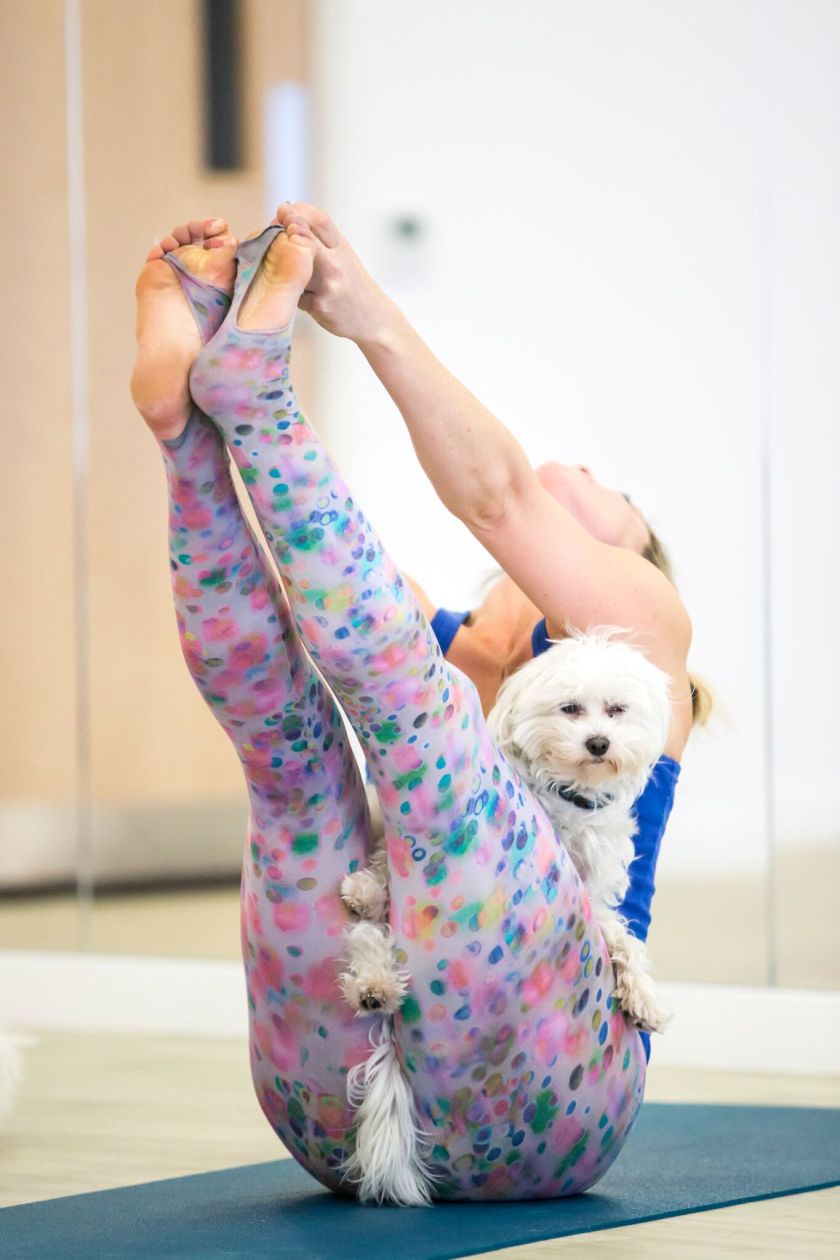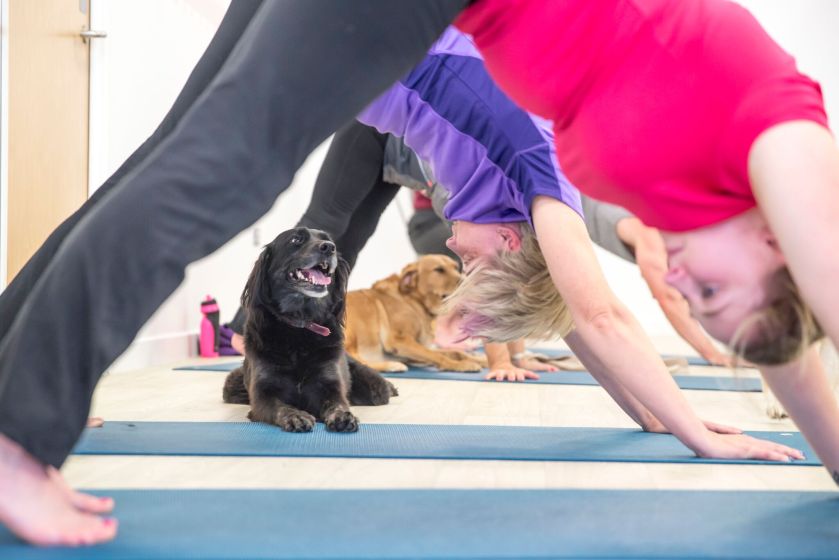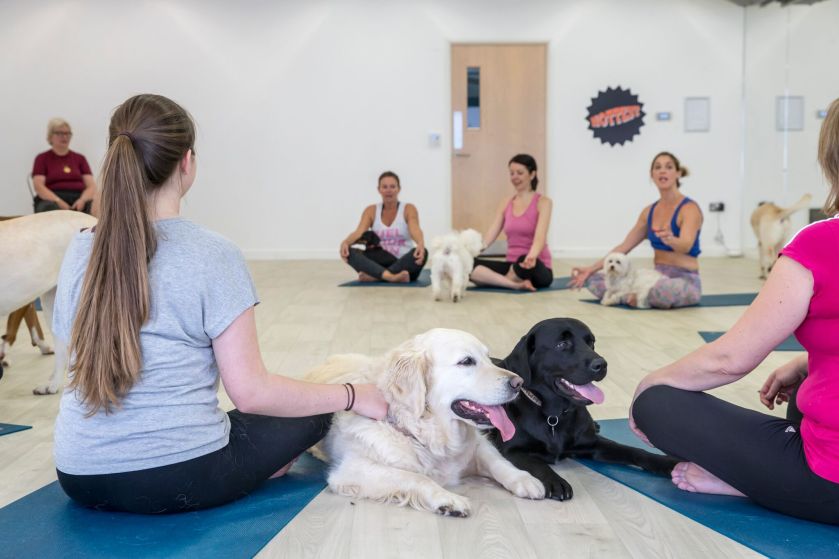Mahny Djahanguiri, is the owner and founder of the successful London based Doga studio Dogamahny.

What made you decide that London was a good place to start your business?
I have lived more than half my life in London. My mum is from Hackney, so she’s a proper Londoner! I was born in Zurich but have always had an affinity with London since my mum’s family live here.
London was more compelling and exciting to venture out to and a great place to start my adult life.
Initially, I was in the musical theatre industry in my early 20’s, but then I stumbled across yoga by accident in 1996 and have never looked back.
I’ve been teaching for over 20 years now and have vast experience teaching adults and kids.
Dogs became my passion around 2005 and then the vision of DOGA came to me when I was in Los Angeles studying yoga in 2009.
And then something just clicked. In 2012 I began teaching my first one-on-one dog yoga client.
Do you notice behavioural differences in dogs after they attend classes?
Most definitely there is a ‘before and after’ in dogs throughout class.
The dogs roam around and do what they like at the beginning of the session. But as the owner begins to de-stress and the central nervous system is being replenished, the dogs begin to relax and calm down.
I have many photos of dog fast asleep in sessions.
And repeated sessions allow the dogs to become used to this and it promotes bonding between owner and dog.

How does this decrease their stress levels?
I have been teaching mum and toddler yoga classes for years now, and I have also dedicated a large proportion of my studies to researching into the central nervous system.
So my theory is as follows:
In the way a new-born baby’s central nervous system is entwined with its mothers, I think that there is no difference in an owner deepening and lengthening their inhalation and exhalation with their pet.
And this can have a direct effect on their dogs’ central nervous system by decreasing their heart rate.
Reason being…the dog is totally and utterly dependant on the owner’s body language, smell and taste.
Now bring yoga into the equation and you will notice that by changing your thinking, feeling, and physical body your dog’s nervous system will absorb all this information and this will be reflected in their mood and behaviour.
It’s remarkable to see the transformation during the class.
Yoga helps to focus inwards.
It helps to withdraw the senses and through posture and breathing we cleanse the kidneys, lower our pulse and most of all replenish the adrenal glands, which releases serotonin and oxytocin and decreases dopamine into the brain.
Your dog can sniff out your calm. Their inherent purpose is to aid you and ensure your safety. If your body tells them you are safe, your dog can relax and rest. Doing yoga and petting, stroking, massaging and connecting with an animal is pet therapy.
It increases joy and happiness and helps with anxiety and depression.
I really believe that DOGA (when conducted in this manner) will be recognised as an animal assisted therapy as well as therapy for rehabilitation in dogs and rescue dogs.
That’s my vision through spreading awareness about DOGA.
What do dogs do in a Doga class?
Not much other than socialise. They are off lead and free to roam around to do what they need to do as dogs. It’s the human pack that works as a collective and draws the canine back into the inner circle of energy.
After 45 minutes into the session, you’ll find that most dogs have placed themselves on a mat (usually not their owners) and have become intrigued and a lot more calmer. If the dog has completely relaxed, then it’s time to get them involved in yoga postures.
I stress though, this isn’t the goal of Doga.
We must respect our dogs’ space. Only if they are willing and relaxed enough, will we lift them into various yoga poses. A large dog over 8 kilos won’t be lifted of course.
How many times a week do you recommend people and their dogs attend a Doga class?
Ideally with a rescue dog you need a daily 45-60 min yoga practice just to signal to the dog that you are calm and in control.
With non-rescue dogs you can still strengthen your natural bond by allowing your dog to watch or interact in your yoga self-practice, however regularly you choose to do so.
A collective group session once a fortnight or once a month is highly recommended to cure anxiety in dogs, as well as humans.
How do find a balance between teaching Yoga as an art form and allowing owners to connect with their dogs?
Doga is symbiotic and always in harmony with nature.
It is an unleashed invitation to bond with nature.
Nature is in balance and having the dogs around us is an added bonus!

Find out more: http://dogamahny.com/where-to-find-a-doga-class/
Photo Credit to SweatStudio.

I have a Labrador who likes to pester my wife as she does her yoga but that is not the same I fear as getting him to do it properly. He even did a downward dog on her mat. As for trying to get him to do yoga…there would be a book in that and not just a blog. I shall it to you and the experts. Great to read about though.
LikeLike
Still worth a shot haha! Thank you though, glad you enjoyed it.
LikeLiked by 1 person
Agreed. Always we must collectively try some yoga…..
LikeLiked by 1 person